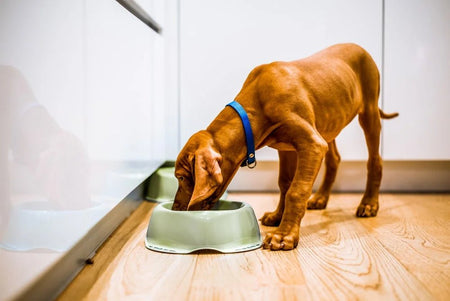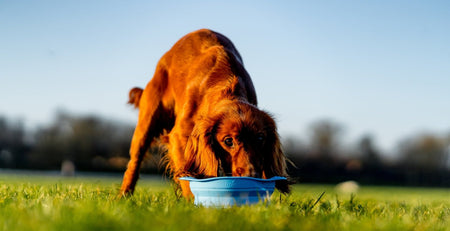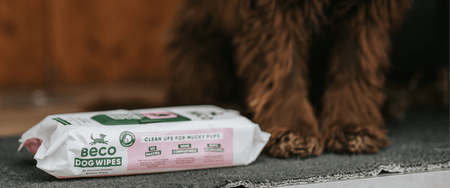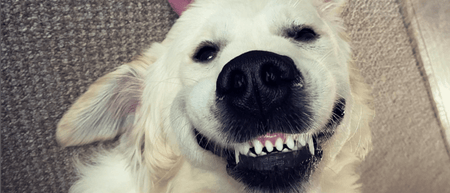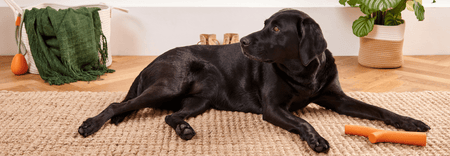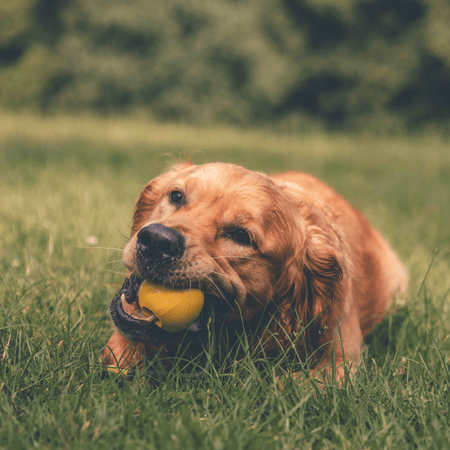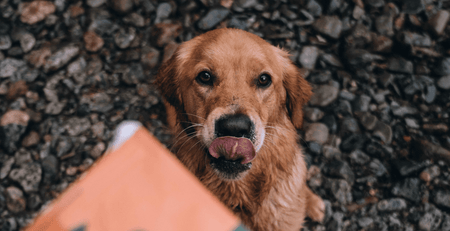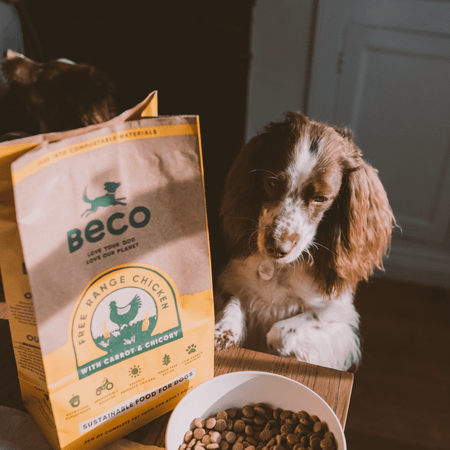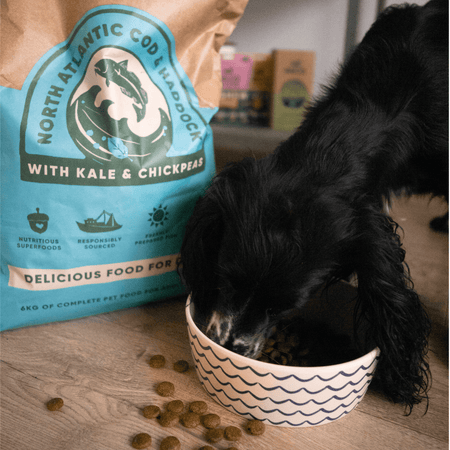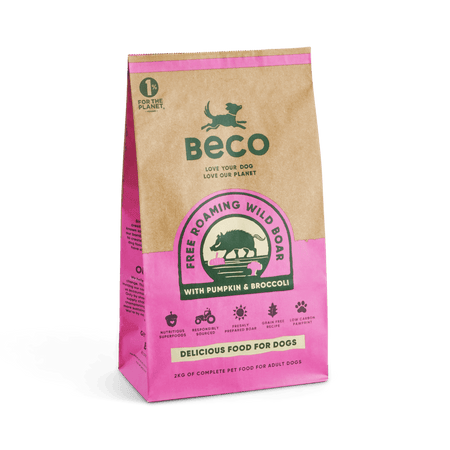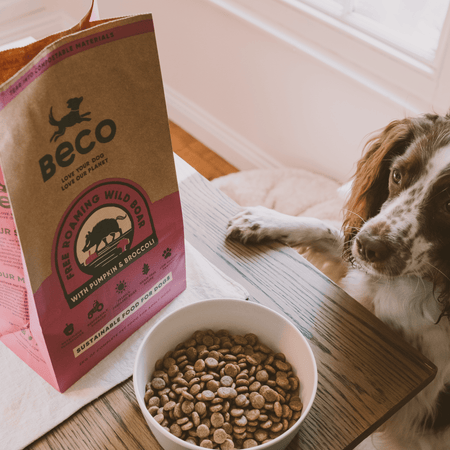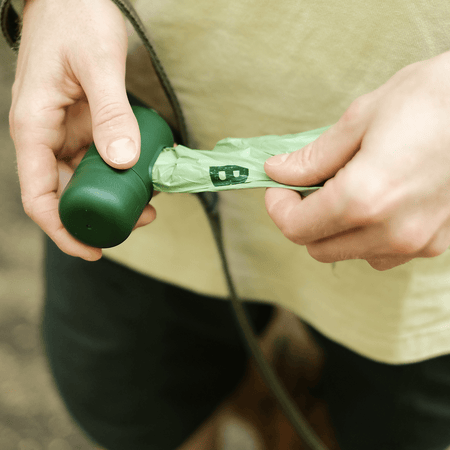Wondering if your dog is underweight? That nagging worry hits hard when you can feel their ribs or notice their dropping energy levels.
Whether your pup's always been lean or suddenly lost weight, we understand your concern.
We’ll break down the signs of an underweight dog and walk you through 7 practical steps to help them gain weight safely.
Your furry friend deserves to feel their best – let's make it happen.
- Visible ribs and spine aren't always normal - learn the difference between lean and underweight.
- Medical issues, stress, or poor diet quality can cause weight loss - address the root cause first.
- Simple solutions like meal splitting and protein-rich foods help dogs gain weight safely.
How Can I Tell If My Dog Is Too Skinny?
Wondering if your dog is underweight? Here are a few clear signs to look out for:
-
Prominent ribs, spine, or hip bones: If these are easy to see or feel, your dog might be underweight. A healthy dog should have a thin fat covering over these areas.
-
Lack of muscle tone: Dogs lose muscle mass when they’re not eating enough or burning too many calories, leaving them looking fragile or weak.
-
Tucked abdomen: An excessively narrow waistline could indicate low body fat or a calorie deficit.
-
Low energy or lethargy: An underweight dog may lack the energy for activities they once enjoyed.
-
Coat changes: A dull or thinning coat, combined with excessive shedding, can be a sign of nutritional deficiencies.

Why Is My Dog Underweight?
If you suspect your pup is underweight, there could be a few reasons for this. Here are the common culprits:
1. Medical Conditions
Illnesses like diabetes, kidney disease, hyperthyroidism, or intestinal parasites can cause weight loss.
If your dog looks skinny all of a sudden and without any visible reason, schedule a vet visit for blood tests and stool analysis.
2. High Metabolism or Activity Levels
Certain breeds, such as Greyhounds or Border Collies that tend to be active, have naturally higher metabolisms.
Because they are prone to burning calories at a pace, you may need to consider increasing the size of their food portions.
3. Stress or Anxiety
Just like humans, your pup can experience stress when unexpected changes occur.
Environmental changes, like moving house or introducing a new pet, can impact a dog’s appetite. Stress can also cause digestive upset, making it harder for them to gain weight.
4. Poor Diet Quality
Low-quality or poorly balanced food is unlikely to give your pup all the nutrients they need.
Always check the ingredient list - your pup’s food should list meat as the primary ingredient, followed by essential vitamins and minerals.
5. Age-Related Changes
It’s often natural for senior dogs to experience a decreased appetite. This could be because of dental issues, slower digestion or other age-related factors.
Puppies, on the other hand, burn calories much faster and may appear skinny even when eating frequently.
How to Fatten Up a Skinny Dog: 7 Safe and Simple Tips
Helping your pup put on a few extra kilos takes care and consistency.
Here are a few steps you can follow to help you out:
1. Increase Meal Frequency
Instead of one or two large meals, offer your dog smaller portions throughout the day.
This is especially useful if your pet has a sensitive stomach, as smaller meals are easier to tolerate and digest.
2. Add Calorie-Dense Foods
High-protein kibble, wet food, or natural toppers like cooked chicken, scrambled eggs, or salmon oil are excellent options.
Opt for a novel protein like free-range turkey or duck if your dog has food sensitivities, as these are less likely to trigger allergies.
Choose foods free from fillers like corn or soy to ensure every bite is packed with nutrients to support your pup’s overall well-being.
3. Make Food More Appealing
If your dog seems disinterested in their meals, make their food more enticing.
Add low-sodium chicken broth, warm up their food slightly, or try different textures like pâté-style wet food.
4. Use Weight-Gain Supplements
Speak to your vet about a supplement to safely increase your dog’s calorie intake. Always consult your vet before introducing new products.
5. Rule Out Parasites
If your dog is skinny but eats all the time, intestinal worms might be the culprit. Make sure you regularly deworm your pet to help maintain their overall health.
6. Monitor Progress
Track your dog’s weight weekly and take notes on their eating habits. If you don’t see gradual improvements, revisit your vet for further advice.
7. Prioritise Hydration
Sometimes, dehydration mimics weight loss by making your dog appear gaunt.
Ensure fresh water is always available and consider hydrating meals with broth or a high-quality wet food.
High-Calorie Food and Its Benefits
| Food Item | Calorie Boost | Nutritional Benefits | Safe for Daily Use? |
|---|---|---|---|
| Cooked chicken | ✅ ✅✅ | Protein-rich for muscle maintenance | ✅ |
| Scrambled eggs | ✅ ✅✅ | Omega-3s and healthy fats | ✅ |
| Salmon oil | ✅ ✅ | Supports coat health and energy levels | ✅(in moderation) |
| Peanut butter | ✅ ✅ | Good fats and protein | ✅(unsalted only) |
| Rice or sweet potato | ✅ ✅ | Easy-to-digest carbs for energy | ✅ |
Frequently Asked Questions
Is my dog too skinny if I can feel her spine?
Feeling your dog’s spine easily could mean they’re underweight. There should be a thin fat layer covering it. If you’re unsure, consult your vet.
My dog is skinny but eats all the time. What’s wrong?
This could indicate an underlying condition like worms, hyperthyroidism, or diabetes. Speak to your vet for testing.
My puppy is skinny but eats. Should I worry?
Puppies burn calories quickly, but if they look underweight despite eating, it’s worth discussing with your vet. Rapid growth or parasites may be contributing factors.
How can I fatten up my skinny dog?
Feed smaller, calorie-rich meals throughout the day. Add nutrient-dense toppers like salmon oil or cooked eggs, and check for any health issues.
Conclusion
Helping your underweight dog regain their healthy weight takes patience and the right approach.
Focus on high-quality nutrition, consistent feeding schedules, and regular weight monitoring. If your pup shows sudden weight changes or isn't improving with dietary adjustments, always consult your vet to rule out underlying health issues.
Want to give your dog the nutrition they need to thrive? Our premium dog food is packed with high-quality proteins and essential nutrients to support healthy weight gain and maintenance. Shop now!


